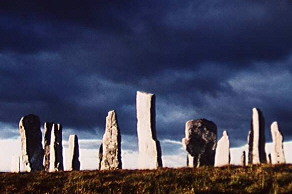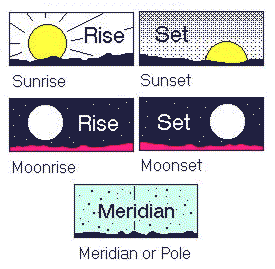
USING THE SITE DESCRIPTION PAGES
Stones
of Wonder
QUICK LINKS ...
HOME PAGE
INTRODUCTION
WATCHING
THE SUN, MOON AND STARS
THE
MONUMENTS
THE
PEOPLE AND THE SKY
BACKGROUND
ARCHAEOASTRONOMY
USING
THE SITE DESCRIPTION PAGES
VISITING
THE SITES
THE
LEY LINE MYSTERY
THE
SITES
ARGYLL
AND ARRAN
MID
AND SOUTH SCOTLAND
NORTH
AND NORTH-EAST SCOTLAND
WESTERN
ISLES AND MULL
Data
DATES
OF EQUINOXES AND SOLSTICES,
1997 to 2030 AD
DATES
OF MIDSUMMER AND MIDWINTER
FULL MOONS, 1997 to 2030
AD
POSTSCRIPT
Individual
Site References
Bibliography
Links
to other relevant pages
Contact
me at : rpollock456@gmail.com

The site description pages give descriptions of and information about individual sites - standing stones, stone circles, and chambered cairns. The most common name of the site is used, and any other names which the site has been known by are mentioned. A grid reference for use with Ordnance Survey maps is given. If the grid reference is followed by an asterisk, then the site is actually marked on the 1:50,000 sheets.
Details of how to get to the site are given under the heading How to find.
The Best time of year to visit names the astronomical event or events which it is likely that the stones indicate. This should be used in conjunction with the DATES OF EQUINOXES AND SOLSTICES and DATES OF MIDSUMMER AND MIDWINTER FULL MOONS tables to find when the astronomical event will take place. A well-timed visit can be one of life's most beautiful experiences and can be as exciting as an online casino win. For a solstice site, it is worth bearing in mind that any day close to the actual date is probably good enough for a successful visit if the weather is clear. For the major and minor lunar standstill sites, the midsummer and midwinter full moons (i.e. the full moons closest to each solstice) of the year of the standstill are the ones to watch; but it is worth remembering that the moon at another phase (not full) during the year of the standstill may be close to the standstill position. (In the DATES OF MIDSUMMER AND MIDWINTER FULL MOONS tables two actual years to view the major and minor extremes are suggested in each case, as the positions from year to year can be very close). The advantage of observing the full moons in preference to other moons is the same now as it was in the prehistoric past - we always know when the full moons will rise and set. The full moon will rise about the time of the sunset and will set about sunrise.
The drawings usually ignore the modern features of the landscape for the sake of clarity. In the drawings and descriptive narrative there are usually three figures from the surveys given for the site. (A visitor does not have to understand the significance of these figures to appreciate the site, and can simply visit at the time suggested).
The azimuth is the bearing from true north, in degrees, of the line which the site indicates. If there is any ambiguity in the site a band of bearings from left to right is given. The second figure given is the altitude, which is the horizon height, in degrees, of the point on the horizon which the azimuth line indicates. (The altitude stated is not corrected for refraction).
The azimuth and corrected altitude, with the latitude of the site, can be used to calculate the declination, which is the third figure given. Declination is another term for celestial latitude. (Imagine the lines of latitude on the globe of the earth projected into space. As the earth turns, celestial objects follow these lines). Having surveyed a site and then used the results to calculate the declination, we can tell which astronomical event the site indicates - this is easier than visiting it every day of the year to watch! This is because the declination value of the sun and the moon for any significant event is known.
The declination of a star does not change much in a human lifetime. However, the declination of the sun and the moon change from day to day. The declination figure is useful because the sun at its key points in the year always assumes the same declination values. For example, at the summer solstice in our modern period the sun will always have a declination value of about +23.5°. At the winter solstice, it will be -23.5°. At the equinoxes, the value will be 0°. For the moon, during the major standstill the midwinter full moon will have a declination of about +28°, and the midsummer full moon will be about -29°. The minor standstill moons are about +18° and -19°.
These are the modern values. But there are also a set of prehistoric 'target' declinations, with which we can compare the declinations obtained from a site survey.
The target declinations are as follows :
| Obliquity
of the ecliptic (sun's declination at the solstices) |
|
| 4000BC | 24.1° |
| 3000BC | 24.0° |
| 2000BC | 23.9° |
| Extreme positions of the moon (corrected for parallax) | ||
| --- | Major Standstill | Minor Standstill |
| 4000BC | +28.4° / -30.2° | +18.1° / -19.8° |
| 3000BC | +28.3° / -30.1° | +18.0° / -19.7° |
| 2000BC | +28.2° / -30.0° | +17.9° / -19.6° |
These target declinations are corrected for parallax, which is the apparent movement of an object when seen from two different positions. Published declinations for the sun and moon relate to an observer at the centre of the earth. This might seem strange, but it means that those figures can be used by anyone, whatever their location. A simple correction can be applied to the lunar figures; the parallax of the sun is so small as to be insignificant, as it is so large and so far away from the Earth.
Note : the declination value of the sun (and to a lesser extent the moon) when it rises through to when it sets on any particular day remains very similar.
The figures given above can be compared with the values from the site surveys to determine whether the sun or the moon is the likely target, and at which point of the year or cycle. It will be noticed that the declinations given for the prehistoric extremes are different to those mentioned for our own era, and listed on the DATES OF MIDSUMMER AND MIDWINTER FULL MOONS tables.
The present-day values of the solar and lunar extreme positions have changed slightly over the centuries since the monuments were erected, because of the precession of the equinoxes - the 'wobble' of the earth as it spins on its axis. Each wobble takes about 26,000 years to complete. The sun and moon do not now move quite as far to south and north at their limiting positions as they did in the prehistoric past. This does not make any real difference to the actual experience of the solar and lunar events at the sites.
The guide drawings on the site pages also give a visual key to the significance of the monument -

Further detail on archaeoastronomical or excavation work on each site can be found by consulting the publications in the Individual Site References page.